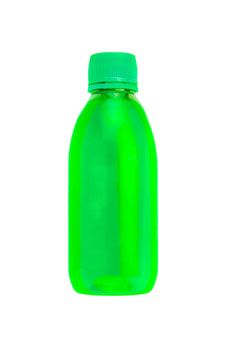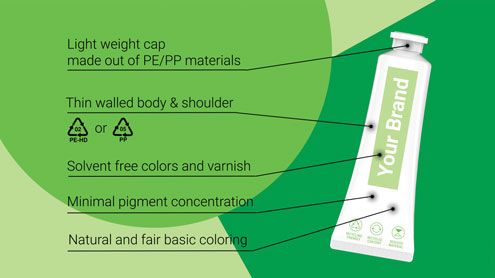Prioritizing Sustainable Packaging
Equipment and Processing Report
Pharmaceutical companies work toward a circular economy by using sustainable packaging.
Garmon - stock.adobe.com

Concerned about waste, plastic pollution of the oceans, and resource depletion, consumers want packaging materials that are minimal yet protective, renewable, recyclable, reusable, and/or contain recycled content, with clear instructions for package recycling. To earn an eco-friendly reputation, packaging must be designed with sustainability in mind, which requires paying attention to all components, including inks and adhesives, as well as disposal scenarios. Many pharmaceutical companies, retailers, and other members of the pharmaceutical supply chain have set sustainability goals and are ramping up efforts to reduce waste in support of a circular economy.
AstraZeneca, for example, has several sustainable packaging initiatives underway, including the launch of a blister laminate that reduces waste, a mail-back pilot program to collect used inhalers, and efforts to prevent pharmaceuticals from contaminating the environment (1).
Bristol-Myers Squibb (BMS) is working to meet a 2020 deadline for its current set of sustainability goals. Waste management is one focus. As a result, the company is conducting a software-based lifecycle analysis to assess the environmental impact of packaging materials used for certain products (2). The company also has eliminated polyvinyl chloride (PVC) bottles and trays and has reduced the use of PVC in blister packaging with the goal of eventually eliminating it entirely (3).
Other efforts include simplifying a packaging insert in accordance with recommendations in the company’s Sustainable Packaging Design Guideline. This change saved 70 tons of paper per year and allowed more product per pallet, which reduced ocean container requirements by 30%. The result? Resource conservation, waste reduction, lower greenhouse gas emissions, and a savings of more than $2 million annually (3).
For BMS’s Orencia (abatacept), a Household Generated Sharps Management Plan offers guidance, instructions, and/or recommendations for handling and proper disposal of sharps. Users of the self-injected product also may participate in a no-cost, mail-back program (4).
At Merck (known as MSD outside the US), Design for Environment guidelines help engineers minimize package sizes and specify more environmentally friendly materials. In 2018, a packaging design change for some of its solid-dose products increased the number of doses per case and reduced the weight of the packaging by approximately 25%. The reduction in materials lowered transportation requirements and greenhouse gas emissions (5).
Promoting the circular economy
To support the movement toward a circular economy, several groups have developed guidelines for more sustainable packaging. A Recycling Playbook developed by Walmart in collaboration with Pure Strategies, The Association of Plastic Recyclers, and the Sustainable Packaging Coalition, helps suppliers pursue recyclable packaging and recycled-content goals (6). It discusses what type of plastic packaging is more easily recyclable, identifies recycling challenges for certain packaging materials, and supplements the Walmart sustainable packaging playbook, which describes best practices such as optimizing packaging design and using consumer-friendly recycling labels (7).
Greener packaging options
With high interest in renewable content, recycled content, and source reduction, packaging suppliers are introducing more environmentally friendly products. A collaborative effort by jARDEN Plastic Solutions, SACMI Group, and Milliken has developed a lightweight high-density polyethylene (HDPE) pharmaceutical bottle. The design depends on a barrier additive from Milliken and proprietary compression blow forming equipment from SACMI, which are used by jARDEN Plastic Solutions to produce thin-wall bottles that are up to 28% lighter than standard designs. The strong, lightweight containers offer excellent barrier performance, require less energy to manufacture, and generate less scrap (8).
To improve the recyclability of tube packaging, Hoffmann Neopac has published the Tube Design Guide for Recyclability. As shown in Figure 1, it recommends a thin-walled body and shoulder consisting of PE or polypropylene (PP) with less than 5% barrier content, lightweight caps of the same material as the tube body, natural or light coloring, and minimalist graphics with solvent-free, ultraviolet-cured inks and varnish. “Sustainability and recyclability can be particularly challenging in the pharma sector, where packaging solutions must protect and preserve the efficacy of important medicines and complex formulations,” said Martina Christiansen, head of Pharma sales and marketing at Hoffmann Neopac. “We see this guide-and the tubes that can be produced by adhering to it-as an important step in an ongoing process to make pharma packaging more eco-conscious.” The company also offers an EcoDesign portfolio that includes the Recycled Tube, featuring 75% recycled, food-grade compliant PE; Sugarcane Tube, made from renewable raw materials and offering the same characteristics and processability as fossil-based PE; and PICEA Tube, comprised of 95% renewable material in the tube body and shoulder-including 10% spruce wood recovered from sawmill waste (9).
Figure 1. Tubes can be designed for recyclability. Courtesy of Hoffmann Neopac.

Sana Packaging makes cannabis product packaging using recycled HDPE sourced by Oceanworks, which intercepts and recycles plastics that impact the ocean. “Our first run of reclaimed ocean plastic cannabis packaging removed four tons (8000 lb) of plastic waste from our oceans,” said Ron Basak-Smith, co-founder and CEO of Sana Packaging (10). Sana Packaging also produces 100% plant-based cannabis packaging from hemp.
Recycled polyethylene terephthalate (PET) containers have been introduced by Bormioli Pharma. Made from 100% pharma-grade recycled content, the containers exhibit transparency and physical and mechanical properties equivalent to virgin PET (11).
AptarGroup is partnering with PureCycle Technologies to commercialize the latter’s ultra-pure recycled PP for dispensing applications. PureCycle’s patented recycling process, developed and licensed by Procter & Gamble, separates color, odor, and any other contaminants from plastic waste feedstock to transform it into resin with properties equivalent to virgin PP. “This critical partnership further reinforces our commitment to supporting a circular economy where products and materials are reused or recycled and do not become waste,” stated Stephan Tanda, president and CEO of Aptar (12).
AptarGroup also provides lotion pumps for several products available via Loop and is a partner in the global circular shopping platform established by TerraCycle. With Loop, consumers purchase products in reusable packaging and they arrive in a returnable Loop tote. Once empty, the consumer replaces the container in the tote and schedules a pickup. Returned containers are cleaned, refilled, and readied to reship, creating a circular product experience (13).
Another Loop partner, RB, offers several over-the-counter products via Loop. The effort moves the company toward achieving its commitment to making 100% of product packaging recyclable or reusable by 2025. “Reusable packaging is the future of consumption,” commented Nitish Kapoor, executive vice-president of the Health Business Unit for RB North America (14).
Renewable BioBase packaging is being launched by Sanner with the introduction of a 25 mm-diameter tube for effervescent tablets with matching DASG-1 desiccant closure. Biopolymers derived from renewable resources, such as bio-ethanol, achieve bio-based content above 90% and significantly reduce carbon dioxide emissions. “Bio-based packaging solutions have the same key characteristics as common packaging solutions; they can be processed on existing filling lines and can be recycled,” says Peik-Christian Witte, director of R&D at Sanner. In addition, says Witte, “compared to common tubes made of fossil resources, this solution can increase shelf life of the tablets due to a higher water barrier performance, which is an additional value-add for our customers. These features support waste reduction for both the packaging solution and the packaged goods.”
Sustainable packaging also is available for temperature-controlled shipments. The foam-free ClimaCell insulated liner from TemperPack now carries a How2Recycle label with the designation “Widely Recyclable.” “Getting the How2Recycle certification will help ensure that anyone who receives a ClimaCell product will know that it can be disposed of alongside the cardboard box or paper bag it came in,” said James McGoff, co-founder and co-CEO of TemperPack (15).
Liner thickness and density can be adjusted without major retooling to meet the needs of controlled temperature or frozen product. “ClimaCell liner options work with gel packs, ice packs, or dry ice and consist of a number of plant-based materials,” says John Briney, director of marketing at TemperPack. The company uses a combination of materials, including starch, to increase the hydrophobicity of the insulation, and wraps the extruded insulation in coated paper.
“Overall feedback on ClimaCell has been great, especially in the specialty pharmacy industry,” concludes Briney. “Most of the patients that were receiving [polystyrene foam] coolers had no easy way of disposing them and either stockpiled them or threw them away in their trash. We’ve received comments from a number of customers of how relieved they were to be able to recycle this new packaging, knowing it can be turned back into paper for other products.”
References
1. AstraZeneca, “Leading with Health, Sustainability Report 2018,” www.astrazeneca.com,accessed Nov. 20, 2019.
2. Bristol-MyersSquibb, “Waste,” www.bms.com, accessed Nov. 20, 2019.
3. Bristol-MyersSquibb, “Product Stewardship,” www.bms.com, accessed Nov. 20, 2019.
4. Bristol-MyersSquibb, “Household Generated Sharps Management Plan,” www.bms.com(May 2019).
5. Merck, “Materials & Packaging,” www.msdresponsibility.com, accessed Nov. 20, 2019.
6. Sustainable Packaging Coalition, “How2Recycle and Walmart Packaging Innovation Summit,” GreenBlue November News and Updates, Newsletter, Nov. 21, 2019.
7. Walmart, “Walmart Announces New Plastic Packaging Waste Reduction Commitments,” Press Release, Feb. 26, 2019.
8. Milliken, “jARDEN, SACMI, and Milliken Collaborate on Sustainable, Lightweight Pharmaceutical Barrier Bottles That Reduce Plastic and Energy Use,” Press Release, May 9, 2018.
9. Hoffmann Neopac, “Neopac Introduces Tube Design Guide for Optimum Recyclability at CPhI Worldwide,” Press Release, Nov. 25, 2019.
10. Sana Packaging, “Sana Packaging Launches New Line of Reclaimed Ocean Plastic Cannabis Packaging,” Press Release, March 5, 2019.
11. Bormioli Pharma, “Bormioli Pharma to Bring Sustainability to the Pharma Industry with the First Compliant Green Plastic Packaging Solution,” Press Release, May 10, 2019.
12. AptarGroup, “Aptar Enters into Strategic Partnership with PureCycle to Accelerate Integration of Ultra-Pure Recycled Polypropylene into Dispensing Solutions,” Press Release, Sept. 3, 2019.
13. Aptar Group, “Aptar Announces Partnership with TerraCycle’s Loop Platform,” Press Release, Aug. 29, 2019.
14. RB, “RB Makes Popular Consumer Health Products 100% WasteFree,” Press Release, May 21, 2019.
15. TemperPack, “TemperPack Partners with How2Recycle Label Program for Its ClimaCell Product Line,” Press Release, Sept. 5, 2018.
About the author
Hallie Forcinio is Pharmaceutical Technology’s Packaging Editor, editorhal@sbcglobal.net.
Transformations in Drug Development for Cell and Gene Therapies
March 28th 2025As a recognized leader in immunophenotyping for clinical trials, Kevin Lang from PPD discusses how spectral flow cytometry is transforming drug development, particularly in cell and gene therapies like CAR-T. He also dives into his award-winning research, including his 2024 WRIB Poster Award-winning work, and his insights from presenting at AAPS PharmSci360.
The Role of Forced Degradation in Method Development, Manufacturability, and CMC Strategy
April 28th 2025Forced degradation studies are critical in biologics development, particularly for monoclonal antibodies (mAbs). These studies simulate long-term environmental stressors to uncover degradation pathways and ensure the stability of critical quality attributes (CQAs), aiding in robust chemistry, manufacturing, and controls (CMC) strategies and regulatory compliance.
Advancing Clinical Trials with Spectral Flow Cytometry: A Conversation with Kevin Lang
March 28th 2025As a recognized leader in immunophenotyping for clinical trials, Kevin Lang from PPD discusses how spectral flow cytometry is transforming drug development, particularly in cell and gene therapies like CAR-T. He also dives into his award-winning research, including his 2024 WRIB Poster Award-winning work, and his insights from presenting at AAPS PharmSci360.
